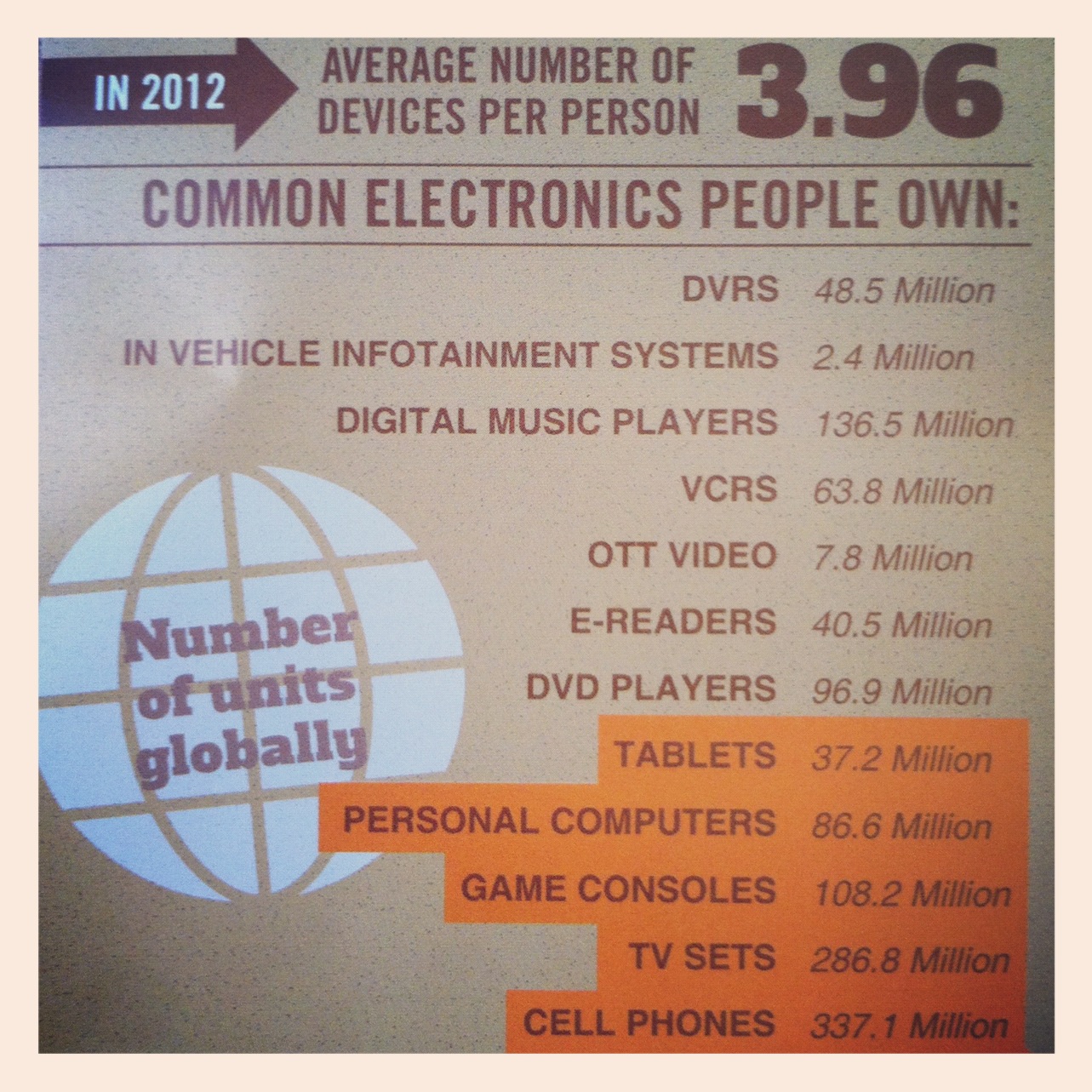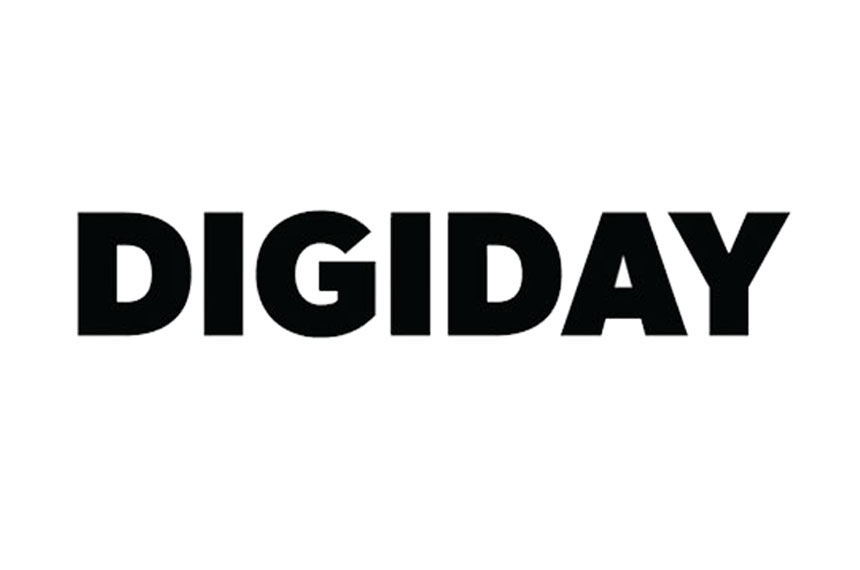Yesterday, I attended Digiday’s Video annual conference here in NYC where roughly 300 digital citizens
convened to reflect on the state, growth, opportunities and challenges of the online video market. Admittedly, I
skedaddled with still yet a couple of sessions to go, but can sum up my five takeaways from the event as
follows:
- We are finally and truly living in a multi-screen culture.

Recent 2012 research from Yume (supported by a killer infographic that is now hanging on my office wall,
snapshot at right) tells us that the average person has 3.96 electronic devices. It was no surprise that the
ones that came in on top (in order of usage) are: cell phones, TVs, gaming consoles, PCs and tablets. Whether
you are a brand, publisher or agency, you need to be thinking not only about the creation of experiences that
feel native to each screen, but also a common way to produce video content – once – and publish to many screens.
After all, we are living in the age of the connected generation. View the full presentation here. - We are living in a simultaneous multi-screen culture.
Mike Proulx of Hill Holiday gave the best presentation of the day (IMO) discussing a great framework
chock full of rich examples and stats that drive home the fact that conversations about your favorite TV
programs are no longer contained to your living room – and forget the next-day water cooler….The Voice’s “final
12” is old news by then. Social media is the instant feedback loop, and the Tweeting and Facebook posting that
happens during such shows as The Voice, Real Housewives (guilty), The Bachelor (guilty), presidential debates
(guilty), etc. can have a measurable impact on program ratings. Folks such as Blue Fin Labs help advertisers
track social mentions and chart them alongside Nielsen ratings. Interesting stuff. View his presentation below. - Video ad spend will sit with TV if it doesn’t already.
We learned from the latest Adap.tv Digital Video State of Industry research that digital video spend is
up 27% in 2012. In 2011, 40% of survey respondents believed video ad budgets should be aligned with display.
However, new 2012 data tells us that dollars have moved primarily from display, and incremental funding has more
than doubled. In fact, 67% of respondents said video is a direct complement to television, and 58% are already
planning TV and video buys together. Watch the full presentation here. - Programmatic buying is becoming the new standard for video.
Just two years ago, the notion of indirect or programmatic buying was somewhat misunderstood. These were dirty
words in some circles because of the belief that premium inventory was (or should be) only available direct from
the publisher. Now, Adap.tv findings tell us that programmatic buying has tripled over 2011, and half of brands
and agencies surveyed are on board with RTB. What’s more, CPMs are up 12%. - Brands need to get more involved in the conversation.
This is one of a handful of video-oriented events held in NYC each year. And each year, we enjoy new research
findings and survey results that help validate existing investments and guide new ones. That said, this event
was no different than others this year in that session content, event attendees, research subjects, and survey
respondents were heavily skewed toward a publisher and agency audience. There’s a need to expand, and even
elevate, the conversation to include more perspective directly from brands. We’re hearing loud and clear from
leading brands such as Zappos, AT&T, Toyota and Comcast, that video is not just another channel,
but actually integral to CMO strategic imperatives.








